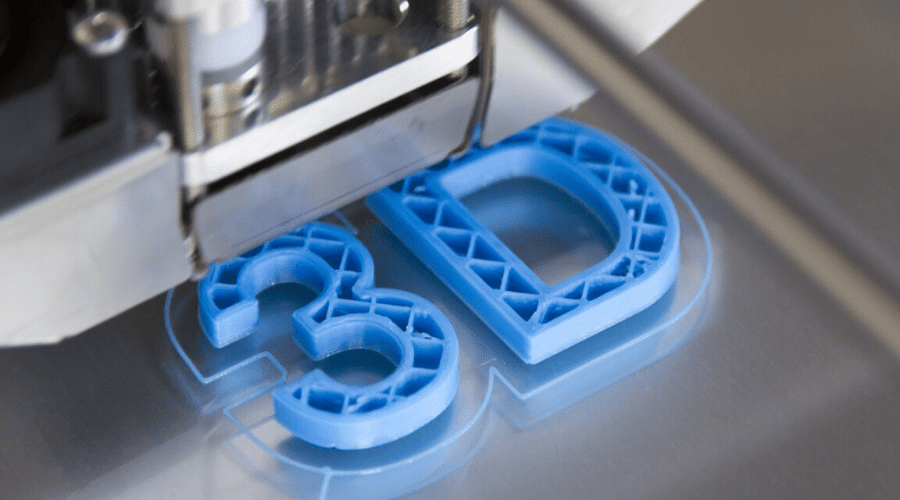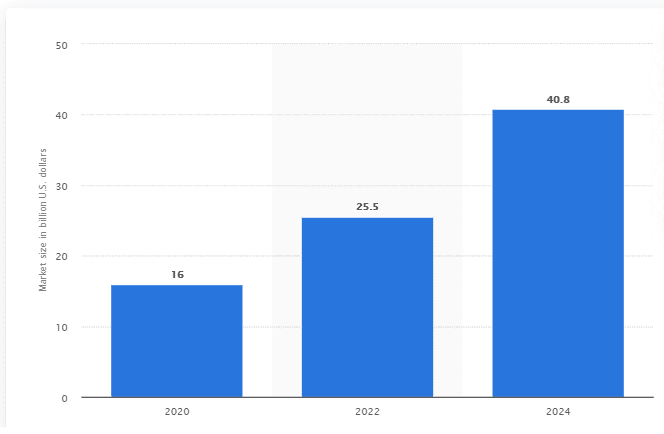
Constantly evolving value chains, market innovations, and cutting-edge technology developments are pushing 3D printing into the mainstream market. This type of production has surged in recent years and a growing number of businesses use 3D printing solutions, allowing them speed and flexibility while reducing costs.
The global 3D printing industry revenue is expected to continue its surge 155% hitting $40.8bn in value by 2024, according to data gathered by LearnBonds.
Prototype and Proof of Concept Main Reasons for Using 3D Printers
3D printing enables the production of complex shapes using less material than traditional manufacturing methods, which is why it is widely used for small production runs, prototyping, small business, and educational use.
In 2020, the global 3D printing industry is expected to be worth $16bn, revealed Wohlers Associates Annual Report on the State of 3D Printing. In the next two years, the market revenue is forecast to touch $25.5bn. Statistics indicate the strong upward trend is set to continue in the following years, with the market revenue growing by a compound annual growth rate of 26.4% between 2020 and 2024.
The State of 3D Printing Report by Sculpteo also revealed that in 2020, the most popular use case of 3D printing was prototyping among 68% of those asked, a 34% rise compared to 2017 figures. Another 59% of companies and businesses used the technology for proof of concept purposes, 36% more than three years ago.
Statistics show that 49% of companies used 3D printing in production, a 27% rise on 2017. Research & education and creation of mechanical & spare parts follow with 42% and 40% of respondents, respectively.
The survey also showed that 41% of those asked said that speeding up product development is one of the main reasons they use 3D. Offering customized products and limited series ranked as the second most-important reason for using the process. Increasing production flexibility was third among 12% of respondents.

Fast growing 3DP material
According to statista, 3D printing is able to utilize many materials for a wide range of applications. New materials and applications continue to be developed on a rapid basis. These new applications are likely to enter a wide range of industries. Among the fastest growing services for a specific material type are metals and metal alloys. The size of the metals and metal alloys 3D printing services market in 2017 only stood at around 266 million U.S. dollars worldwide. Metal 3D printing technology is relatively young but many major breakthroughs take place every year. Printing metals are generally more expensive, such as copper, for example; metals use heavier and more precious materials. This application is generally a slower process and the machinery itself is more expensive. As more businesses begin to have their own printers, printing software will grow faster than printing services.
HP, General Electric, and Seiko Epson Lead in 3D Printing Patents
Looking at the number of 3D printing patents over the last decade, HP is the global leader in this field. The US multinational information technology company publicly traded on the New York Stock Exchange (NYSE: HPQ) set up its 3D printing unit in 2014. Today, it has a total of 454 published patents for 3D printing.
US conglomerate General Electric (NYSE: GE) ranks second, with a total of 408 3D printing patents in the last decade. In 2018, the US multinational filed a patent to use Blockchain technology to validate and verify 3D printed parts in its supply chain. This technology makes it possible to store and transmit information in a transparent, secure, and functional way without a central control body.
Statistics show that Japan’s Seiko Epson and Germany’s Siemens follow filing 251 and 231 3D printing patents in the last decade, respectively.
HedgeThink.com is the fund industry’s leading news, research and analysis source for individual and institutional accredited investors and professionals



































